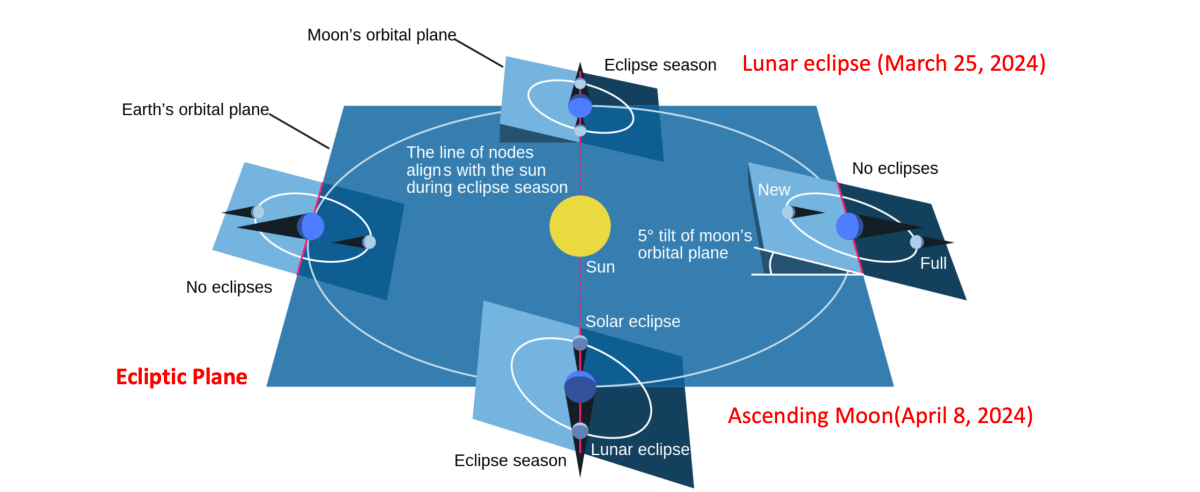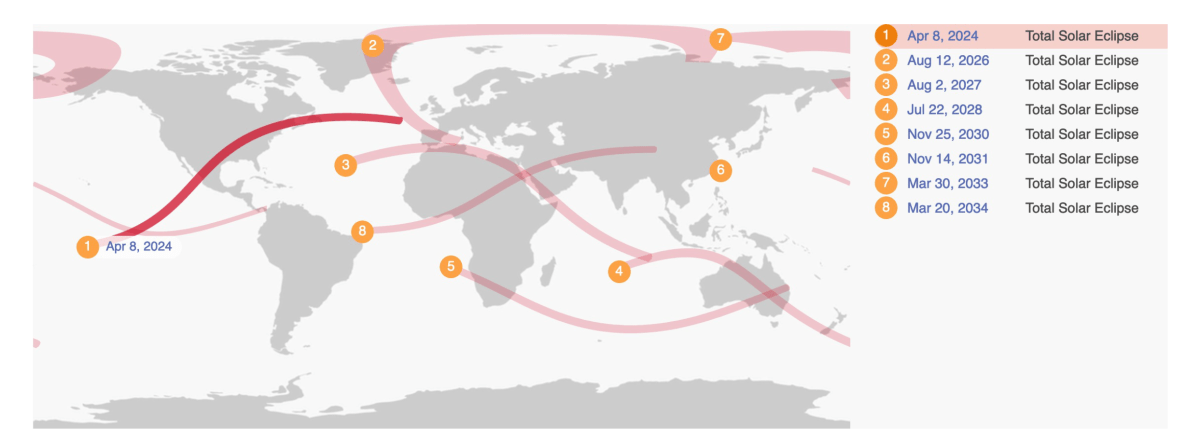As chair of the Physics Department at St. Michael’s College in Colchester, Alain Brizard anticipated that he would need to assemble answers to common questions about why total solar eclipses occur and why scientists get excited about them.
But while preparing to give a presentation about the impending astronomical event last week, he stumbled across a range of exciting facts “that are going well beyond the fact that the moon is going to come between Earth and the sun for a brief period of time” on Monday afternoon.
For example, Brizard, who holds a Ph.D. from Princeton University in astrophysics, spends a lot of time thinking about the behavior of the sun’s atmosphere. The total solar eclipse will be a unique opportunity to see action in the sun’s corona, he said.
In short, as long as the weather cooperates — and it’s expected to do so within the path of totality in Vermont — the sky is going to put on a show come Monday.
This interview has been edited for length and clarity. Graphics are courtesy of Alain Brizard.

VTD: For those who plan to view the eclipse in the zone of totality, what can they expect?
Alain Brizard: The eclipse will start in a partial phase. The moon is going to progressively creep across the surface of the sun until it covers, entirely, the surface of the sun. The moon is going to be bigger than the surface of the sun on Monday, so the duration of totality will be about four minutes. The moon will cover the surface of the sun, and the sky will be dark. During that time, we’ll be able to see the solar corona, and during that time, it will be safe to remove your solar eclipse glasses.

Just before totality, we will have something called the diamond ring. Here, the moon is almost
covering the entire surface of the sun. But there’s a little bit of sun peeking out.
And then, because the moon is not a perfect sphere, it has craters and valleys and so on, you have the phenomenon called Baily’s Beads, where the sun is going to peek through valleys on the surface of the moon.
As an incredible bonus, we’ll be able to see the five ancient planets: Mercury, Venus, Mars, Jupiter and Saturn. They’re all going to be visible in the sky for about three minutes.
Even more exciting is the forecast. People used to say, a few weeks ago, ‘Where do you go in the country to see the best conditions? Go to Texas.’ Well, they’re expected to have a rainstorm. Knocking on wood, we may be the best region in the country to see the solar eclipse.
VTD: Why are total solar eclipses so rare?
AB: The Earth moves around the sun on a plane called the ecliptic plane. And it’s called the ecliptic plane because this is where things can come between the sun and something else.

The moon orbits the Earth on a slightly different plane, and that plane is tilted by about five degrees. (The moon) crosses the ecliptic plane only twice each orbit (of the moon around the Earth). When the moon’s orbit crosses the ecliptic plane exactly between Earth and the sun, that’s when you would expect to see an eclipse. If the moon crosses the ecliptic plane on the other side of the Earth, that’s when you would see a lunar eclipse.
So, three conditions have to be met in order to have a total solar eclipse. So first of all, the moon must cross the ecliptic plane. It does that twice a month. It must, at the same time, cross the line between Earth and the sun, and that’s rare. At the same time, the moon must be in the new moon phase. That’s why it’s so rare.
VTD: What’s the difference between a partial solar eclipse and a total solar eclipse?
AB: The solar eclipse itself is a question of geometry. On Monday, the zone of totality will be about 110 miles across. There’s another shadow, called the penumbra. This is where you would find a partial solar eclipse. In 2017, we were not in the zone of totality. We were in the zone of partial eclipse, so we could still see the sun, but there was one part of the sun that was blocked.

VTD: Do all total solar eclipses look the same?
AB: The moon, on average, appears to us to be about the same size as the sun. If the moon was closer to us, it would be bigger in size, so it would cover more of the surface of the sun. If the moon was farther away, it would cover less of the surface of the sun.
On Monday, the moon is going to be closer to us, and it’s going to block more than the surface of the sun. The size of the sun varies during the year. In July, it’s farther away from Earth and slightly smaller in size. In January, Earth is closer to the sun, so it’s going to appear bigger in size. Those two effects basically mean that the moon will be at perigee Sunday night — it’s going to be the closest it can be to Earth, and it will have a very large angular diameter, much larger than the angular diameter of the sun on Monday.
This has a direct correlation to the duration of totality. If you think about it, if the disk of the moon was exactly equal to the disk of the sun, totality would last zero seconds. The moon would move in, and you would still be able to see the surface of the sun, it would cover, and soon thereafter you would see the other side of the sun.
But now, we’re lucky. The size of the moon is large enough, and it’s closest as it can almost possibly be to the Earth. It’s going to be a big new moon, and it will cover enough of the surface of the sun that totality will last about four minutes in the center of the zone.
VTD: You’ll be watching the sun’s corona during the eclipse. Why?
AB: We are presently entering a phase of maximum solar activity, which is predicted to reach a peak in 2025. The eclipse in 2017 was at a time of minimum solar activity. The eclipse on Monday will be during a very exciting phase, so the corona, or the atmosphere around the sun, may be more active than it was in 2017. We’ll see more structure. It’s a much more dynamic phase of the sun.

VTD: Will we be able to see another total solar eclipse in our lifetime?
AB: In the next 10 years, none of the solar eclipses will cover the contiguous U.S. So this solar eclipse in 2033 will clip Alaska, and that’s pretty much it. If you were a total solar eclipse chaser, Africa would be a good bet. You’d go to Egypt, maybe, on August 2, 2027.

VTD: Why should we care about all of this?
AB: There’s no practical aspect to a solar eclipse. For the general public, it’s the sense of awe that such a rare event can be witnessed by such a large number of people.
This particular one is crossing a part of the country from the west coast of Mexico to the east coast of Canada, crossing areas with relatively large population densities. Consequently, I think I heard the number of about 30 million people will be in the path of totality. In 2017, the total solar eclipse had a different path, starting from the northwest (United States), and then ending let’s say in the southeast. So overall on average with a lower population density. So that makes this probably the most viewed total solar eclipse for a long time, certainly this century.
The last total solar eclipse that came through Burlington was in 1932. I was not alive. A fair guess you weren’t either. So I think it’s a very special event.
My advice is: It’s going to last three minutes. Stop futzing around with your phone and your camera. Just be in awe of one of the rarer manifestations of the interaction between the sun, the Earth and the moon.
